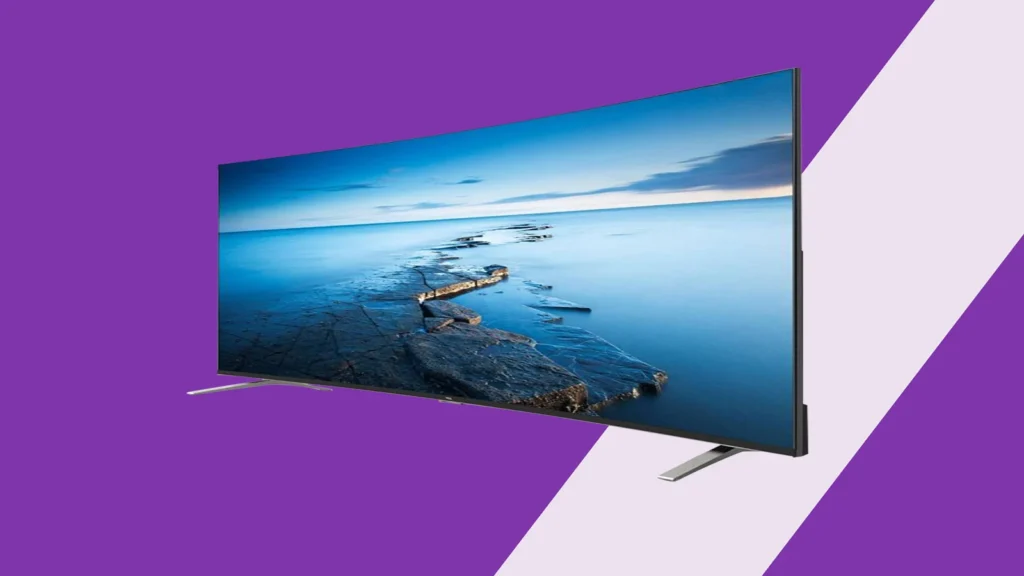The best types of screens in order

Screens are an essential part of our daily lives, whether in home entertainment or work environments. Today there are a variety of monitors with different specifications and performance, which makes choosing the right monitor important. In this article, we will review the best types of monitors, ranking them according to their performance and quality.
1. OLED Screens
Besides, if you love watching films or TV shows that exploit the differences in contrast from one frame to the next to create bright accents and dark, atmospheric backgrounds (be it an explosion in a cave or an alien spacecraft landing on Earth), the amazing capabilities that OLED displays give you in terms of how well and naturally they display contrast and brightness are really worth it. OLED displays can also display a wider gamut of color and finer gradients between different shades. Ultra HD Premium and Advanced HDR logos require 10-bit panels, 1,000-nit peak brightness, and a wide color gamut, and OLED displays meet all these specifications well above the required specifications. Then, if you want the best gaming experience, Ultra 4K definition, and HDR, all in one OLED screen, you will need to remember that for gaming, the response time and refresh rate are key.
If you love gaming and watching films and TV, you might be interested in a cutting-edge OLED television, given that OLED screens are the best for displaying fast-moving image content. A good example of a reasonably priced OLED television is the LG OLED BX and CX series, which are rated as excellent for gaming by providing high-quality display, fast response time, and a 120Hz refresh rate. Unlike other types of screens, OLED screens can display fast motion perfectly. Besides, OLED screens can display perfect black color, and this improves performance under dark and dim room conditions, which are some of the most common viewing environments when playing games.
2. QLED Screens
From a performance perspective, QLED screens are able to decrease and attenuate the phenomenon of reflections, which is typical of TV sets that use screen-emitted light. This is possible thanks to a sophisticated optical filter that blocks and absorbs reflections, no matter the viewing angle. The film that composes the QLEDs lights up in a different way, preventing these annoying reflections. QLED screens are therefore suitable for people who are interested in uncompromised image quality.
QLED screens for TV sets have an organic light-emitting diode that is different from the LEDs used in OLED screens. It even surpasses OLED screens in terms of image quality. In the case of QLED, we are referring to very tiny particles, smaller than the diameter of a human hair, which have the ability to produce the most realistic and detailed colors possible. They are equipped with exceptional characteristics that make them recommendable for screens of at least 50 inches.
3. LED Screens
Black light can be a big issue if you are looking for a high-quality TV. In those scenes where we have a lot of dark content, it’s essential that our TV can represent very deep blacks. This is impossible on high-quality LED TVs, at least using the classic LED backlight, which can light up the dark areas of the image, leading to worse contrast. Inexpensive LED TVs have to work even at full light level to achieve the wide color gamut necessary to honor HDR content. As a result, scenes with very dark areas have clearly defined halos around light spots. However, the classic LED backlight is not the only possible configuration, and many of the best LED TVs use a mix between a very advanced backlighting system and a wide variety of filters.
The best types of TV screens. This article will help you understand the best TV screens of the moment. In this list, you can find the flat or curved TV that best suits your use case. LED screens. If what you are looking for in 2021 is a new TV, the first decision you should make is to bet on the technology offered by an LED screen. It is true that OLED TVs have improved significantly during the last year, and that these LEDs also have some very interesting features, but the price difference means that you will get a panel with better brightness, higher refresh rate, and more advanced features if you are betting on a high-end LED screen.
4. LCD Screens
However, far from being at the bottom of the hierarchy for TV screens, there are actually countless positives that come with LCD screens. They are more energy efficient, tend to operate at a lower temperature, and are generally easier to produce than their LED and OLED counterparts. The dilemma that most users struggle with is choosing between standard HD screens or the increasingly popular Smart TV screens. When looking to purchase a new television, it is easy to be bogged down by all of the different options that are available to us, with each option claiming to be just as good as the last. While there are many things that only technological enthusiasts can truly appreciate, there is one aspect that every person in the world can relate to: the screen. Believe it or not, that sometimes square or rectangular box that we gaze upon to get our daily home entertainment can make a difference in our viewing experience.
When it was first introduced, it was touted as the future of television, and it has more than lived up to the hype. However, as an OLED screen can run into the thousands, it’s best reserved for those who want the biggest and the best, and are willing to pay top dollar for it. Great for both movies and games, an OLED screen is perfect for anyone who is serious about their viewing habits. With the prices of LCD televisions dropping, it’s common to see a brand new TV as the main purchase of just about every individual. Just below OLED screens for quality, the new and improved LCD/LED screen is now the most popular screen of them all and is perfect for just about anybody, no matter their interests. A basic breakdown of the LCD TV is as follows, with each of the guides describing the respective structure:
5. Plasma Screens
Plasma screens include gas plasma technology, and they can be on the cheaper side compared to LCD. They offer enhanced picture quality, vibrant colors, little or no grain, and an ideal black level, giving you the best home entertainment experience. They offer a wide viewing angle, therefore allowing pictures to look as good from the sides as the front. Plasma screens also have fast pixel response, which is excellent for video content and high-speed sports. This characteristic prevents motion blur and allows clear and smooth motion. They offer superior refresh rates, thus incredible fast moving objects. In case you are looking for the best TV screens, above is a great list, and your choice of the type of TV screen can be based on the features it carries. However, a TV’s capabilities are stronger if you connect it to a home theater system or TV speakers.
A home theater is never complete without a big screen TV. This is especially true because with this technology, you can enjoy your best shows and movies in vibrant colors and with clear voices. The quality of this entertainment center is also incomparable to the regular television. Even more, if you have never used a big screen before, then you have to get it to complete your home t










